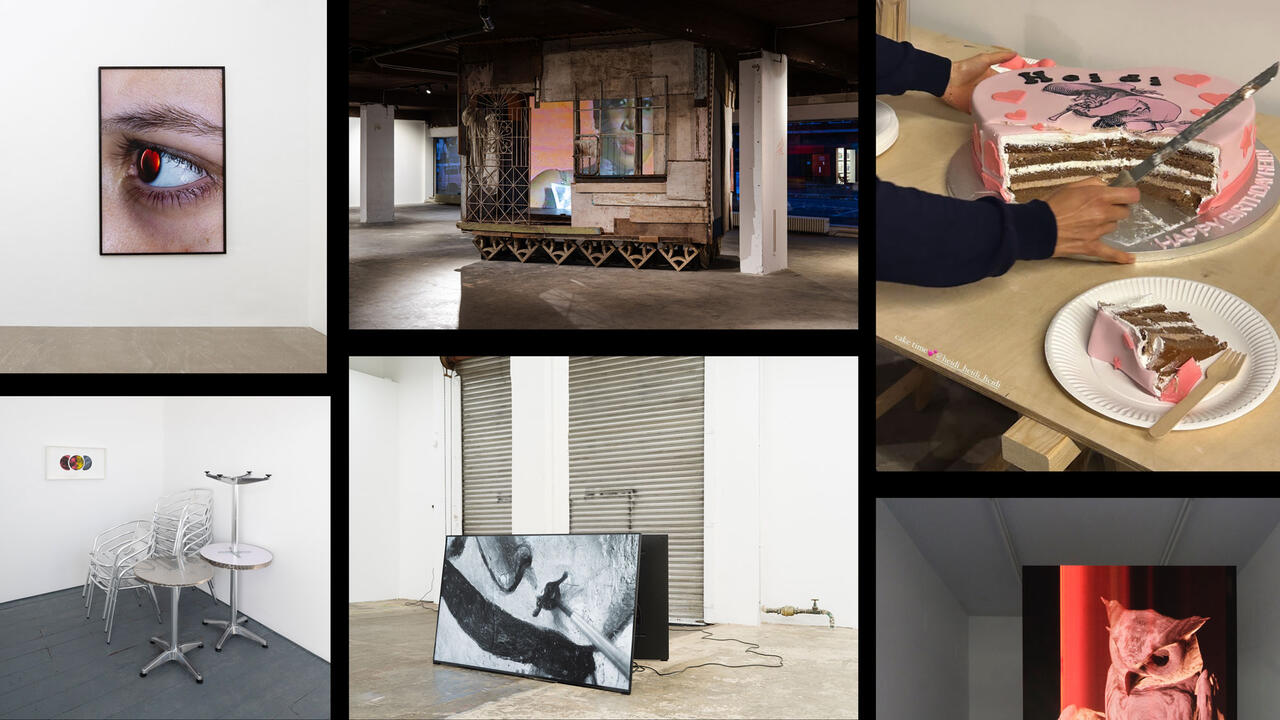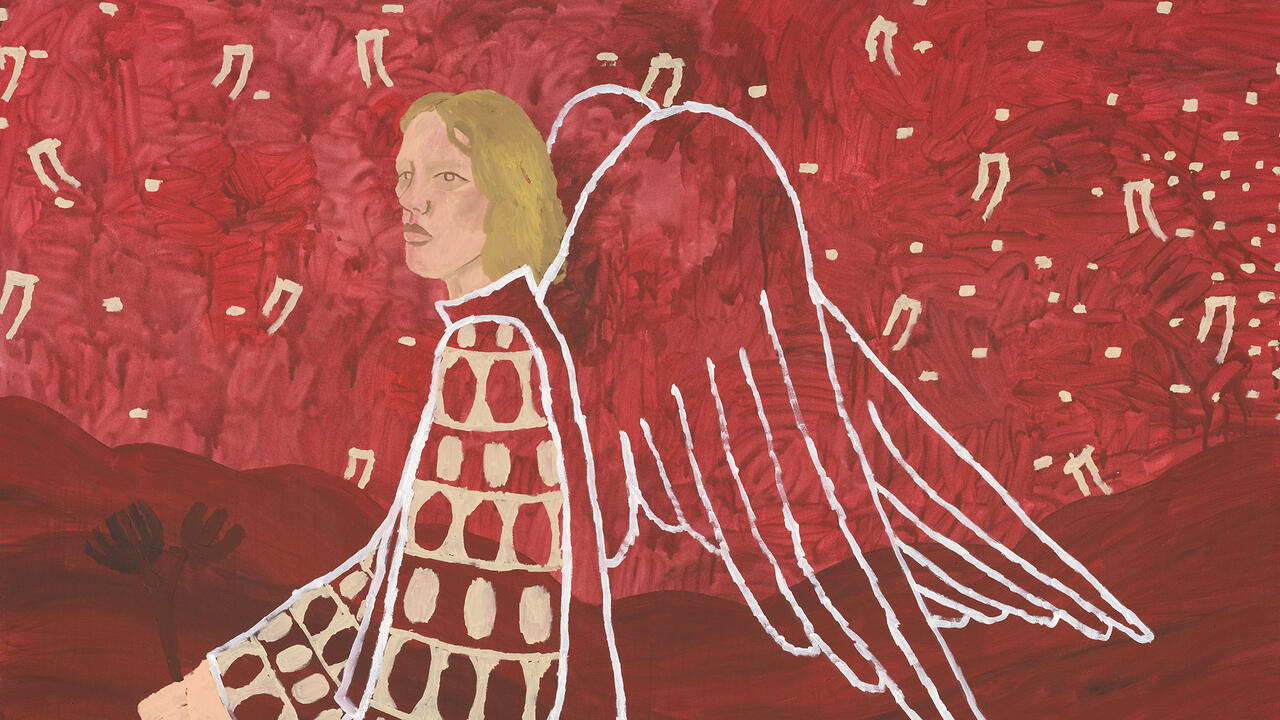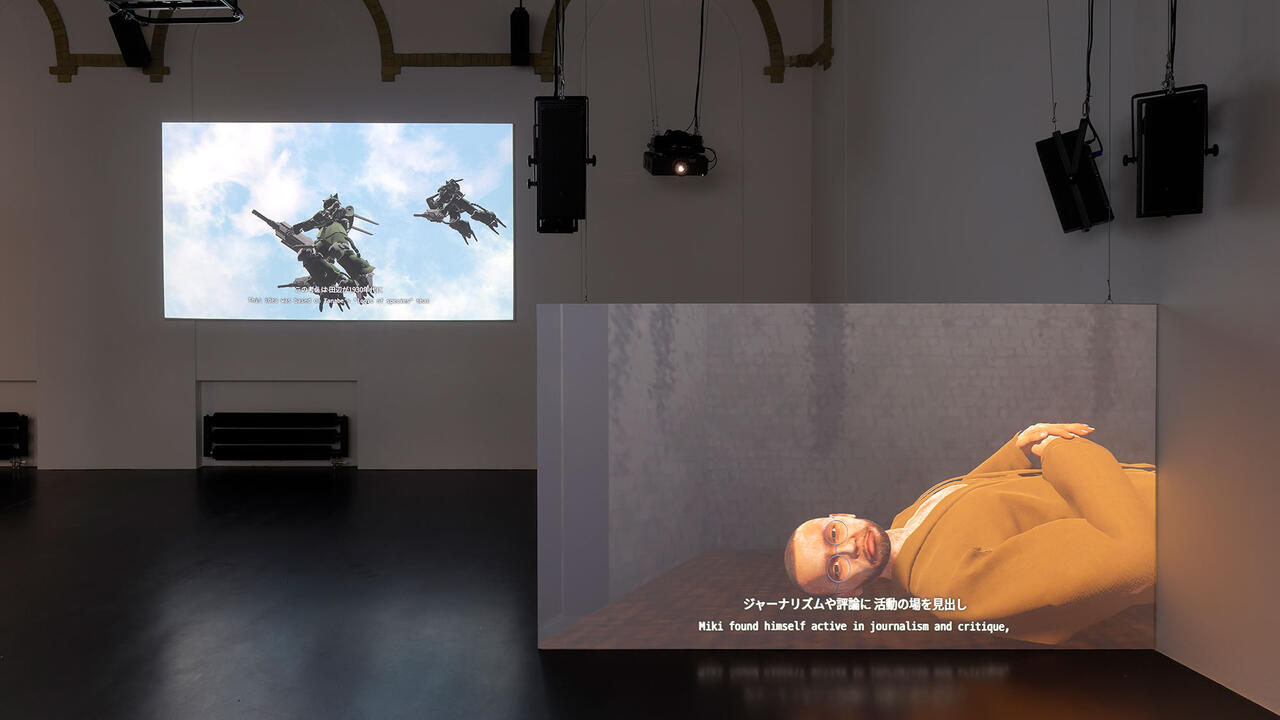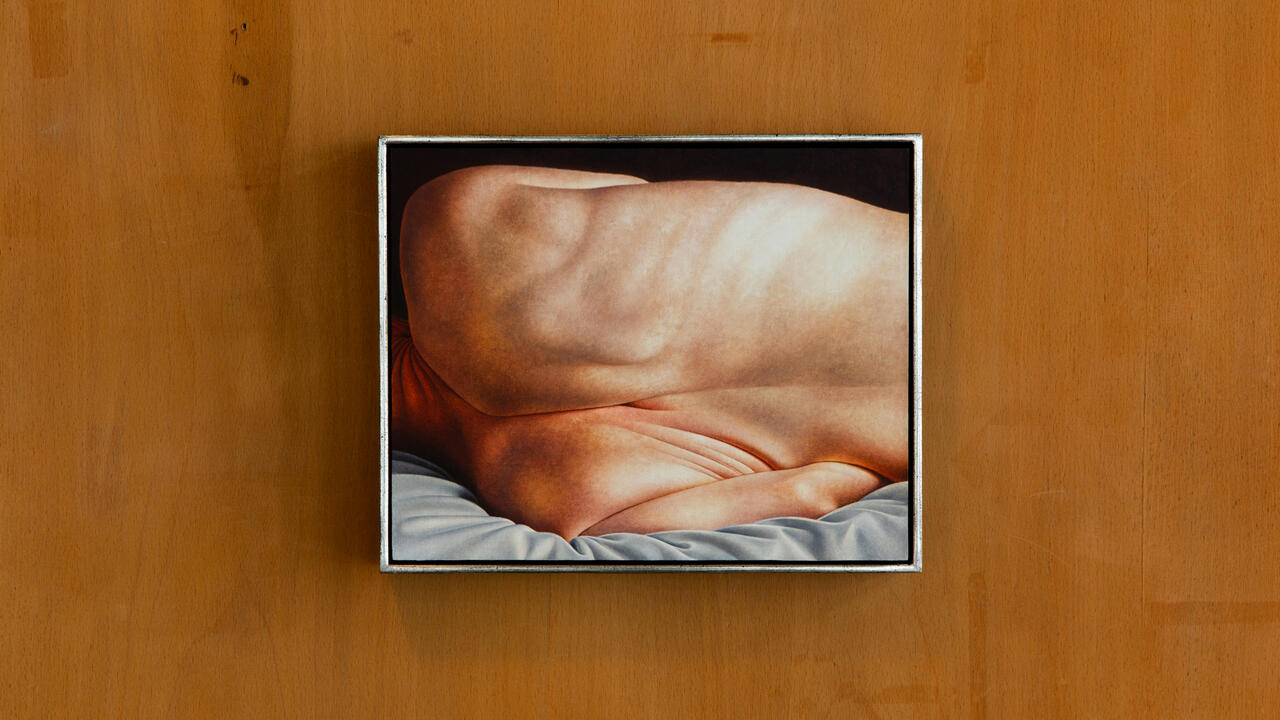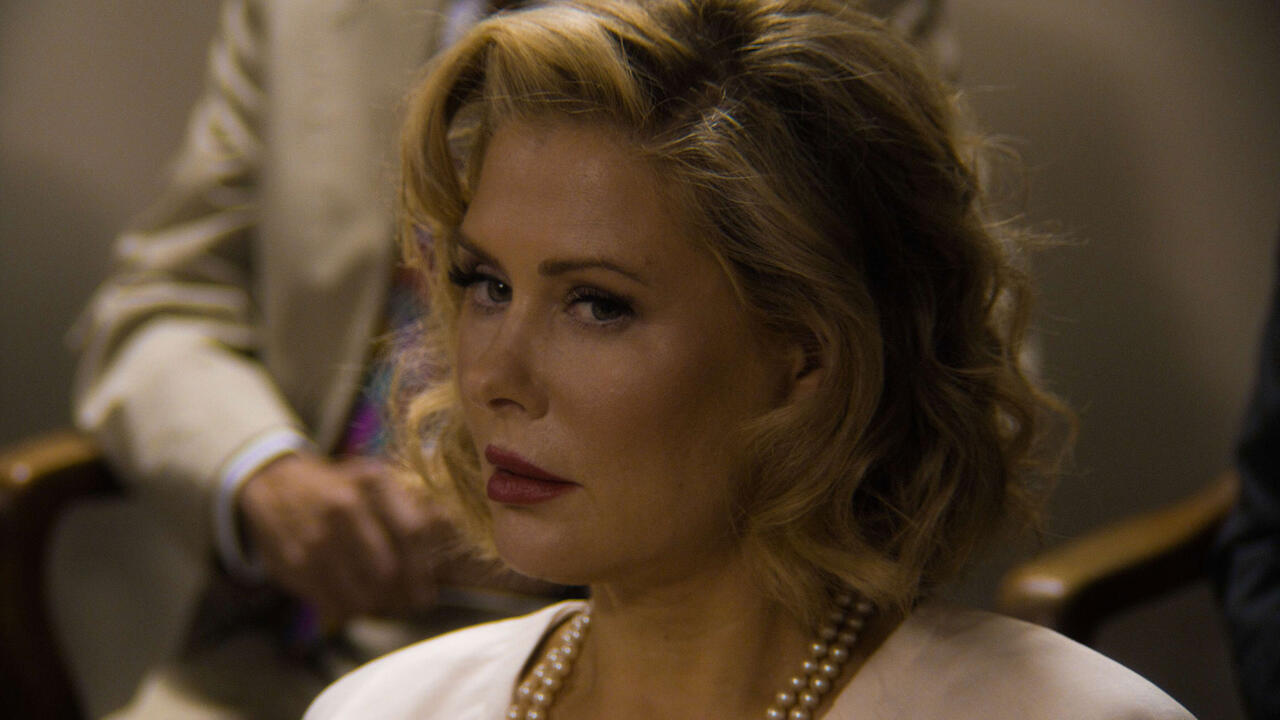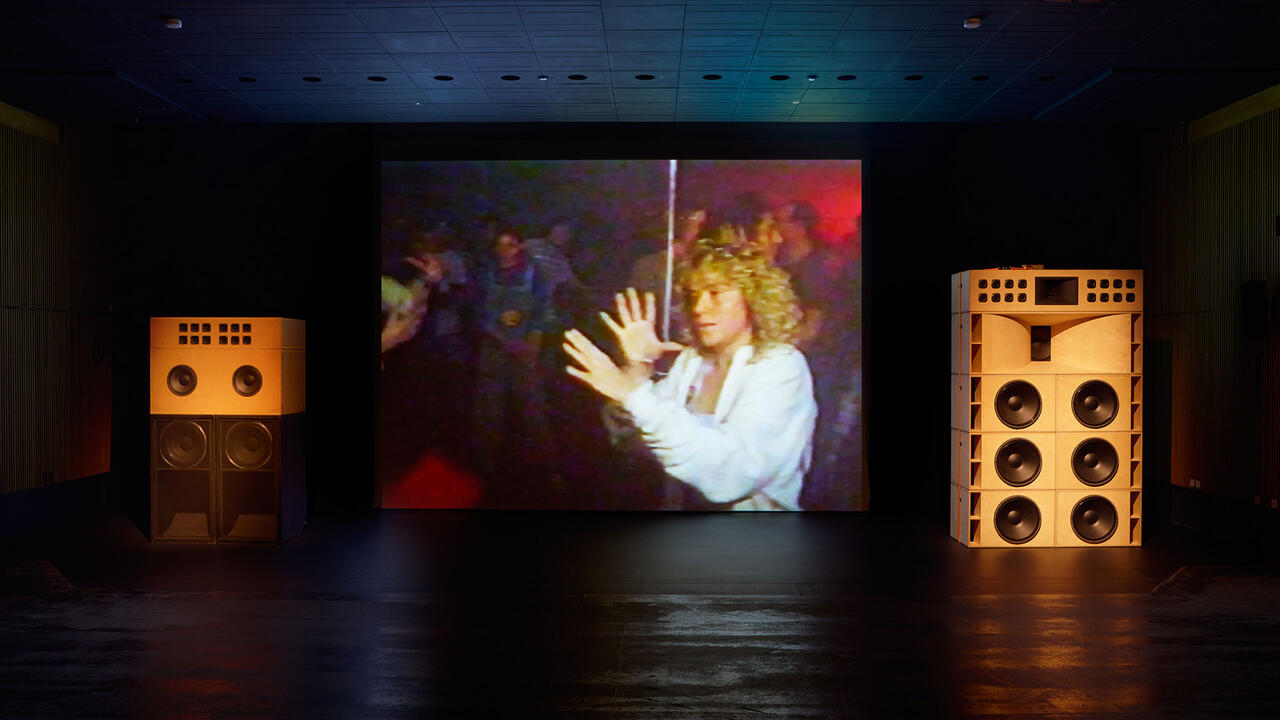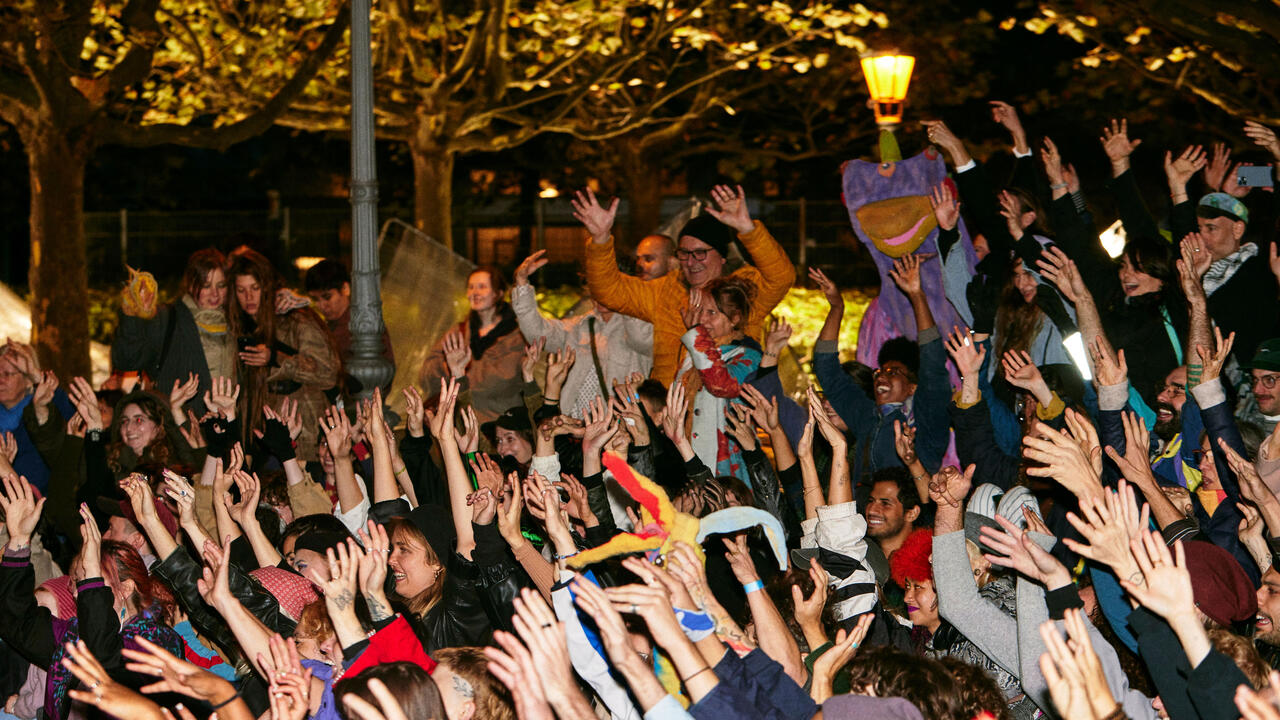The Way We Do Art Now
Tanya Leighton Gallery, Berlin, Germany
Tanya Leighton Gallery, Berlin, Germany

The idea of art as something one may ‘do’ rather than ‘make’ has its roots in the 1960s, when Conceptual art turned art-making on its head, allowing all sorts of unlikely practices into its remit, like reading, writing, video-making, performing or even happening. The title of this exhibition, ‘The Way We Do Art Now’, is borrowed from John Baldessari’s 1973 film, a spoof on the endless possibilities of art practice in which ‘the birth of abstract art and […] probably the beginning of how we do art now’ is described in anecdotal form as occurring when an ancient Roman wall painter threw a sponge at his painting in frustration, and through this act achieved the effect he had been searching for.
The Way We Do Art (after John Baldessari) (2010) is also the title of a work in the show by UK-based Czech artist Pavel Büchler, who curated the exhibition of 16 artists. The title is painted in watercolour on a large piece of paper, copied from the typed-out title as it appears in Baldessari’s film. Reference, practice and subject are all tied together in a tight conceptual knot – characteristics that come up in many of the works Büchler chose for this subtly thought-provoking show.
The exhibition opened during the fourth edition of Berlin’s annual Gallery Weekend, a coordinated opening of exhibitions at some 40 participating galleries, with many other galleries (including this one) organizing concurrent events for the throngs of visitors descending on the city. In the face of the prodigious scale of this extravaganza, in which the great quantity of art production and its attendant mediation was a ready distraction from critical discernment, this exhibition posed pertinent questions about the ways and means and, crucially, the why of art making now. Though the works were mostly modest in scale and execution, the show possessed an ambitious concept and brought together a tight if disparate collection of works that mined a post-Conceptual vein, while resisting any notion of a separation between art and life.
Method, medium and meaning converge in many of the works. Jonathan Monk’s tautological film Two Correlated Rotations (2004), a 16mm film on a simple looping machine documenting the construction of the very looping machine itself, is like a filmic version of Robert Morris’ seminal Box with the Sound of its Own Making (1961), whereby the medium seems to meditate on its own origins. Morris’ legacy is also to be found in the projection of Bruce McLean’s little-known early film In the Shadow of Your Smile, Bob (1970), where, in a spoken commentary, McLean and a fellow Scot analyze the poses and gestures of his filmed image, in a tongue-in-cheek Morris-esque mind/body disconnect. The ‘anything goes’ nature of Conceptual art is both satirized and utilized.
Many works here have to do with the activities of everyday life. Amikam Toren’s Black Hole (1997–2006), for instance, in which the artist’s peeling of his daily orange becomes a way to explore the spiral form, and the collection of ten years of dried out, curving orange peels – shoved into a bin bag and placed on the floor – becomes a concentrated elegy about the passing of time and the ongoing, quotidian nature of artistic practice. Likewise, Dean Hughes’ embroidery of the seat of the bus he took every day, subtle to the point of invisibility, points to both the normalcy, repetition and work-like quality of ‘doing’ art, but enhances these qualities so that they themselves become the subject, paradoxically revealing their own potential and quiet beauty (Embroidery Thread on a London Bus Seat, 1993–6).
Amongst the most succinct works are Pierre Bismuth’s Unfolded Origami – Lampion and Unfolded Origami – Tortue (both 2003), a pair of found posters, each showing a tropical island, framed but still bearing the folded traces of their previous incarnations as, respectively, origami lantern and origami turtle. Thoughts about the potential of found material, the creative impulse to transform matter, the intellectual desire to rationalize and object-image relations, gather and dissipate around these light-footed works.
In this multi-generational exhibition, Büchler is not concerned with discovering talents new or old, but rather revealing the simple continuity that the making of art involves, particularly in a time when ‘artist’ seems to rank as a profession alongside other conventional career choices. With a welcome levity, it shows that being an artist is not an escape from everyday life so much as a harnessing of it. As he does in his own often physically unassuming but deeply considered artworks, Büchler allows the works here to demonstrate the artist’s contemplation and probing of the fabric of life. Despite its sometimes tautological appearance, this is not ‘art about art’, but very much ‘art about doing art’.









